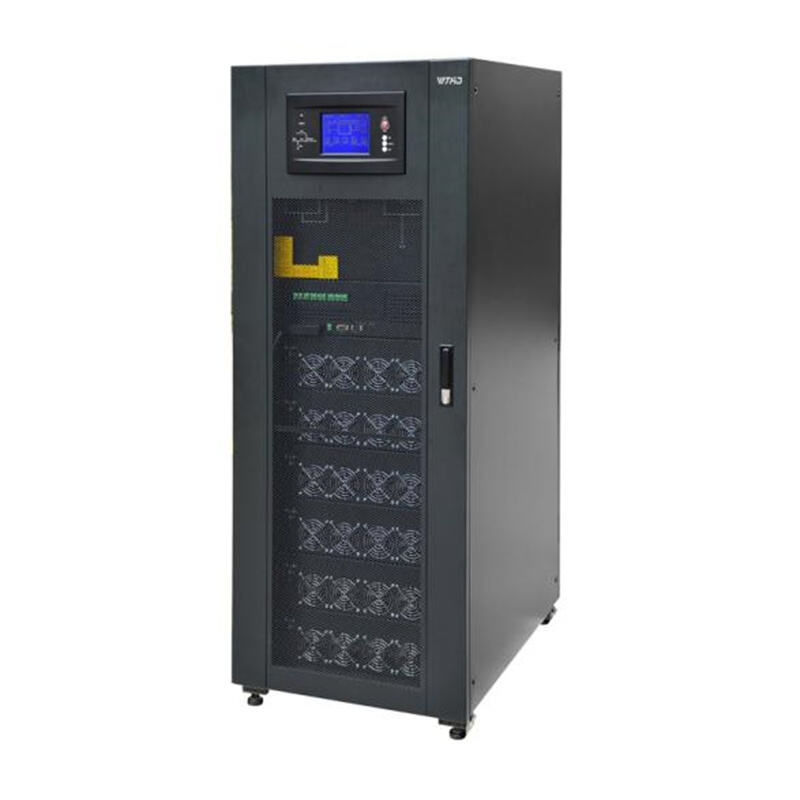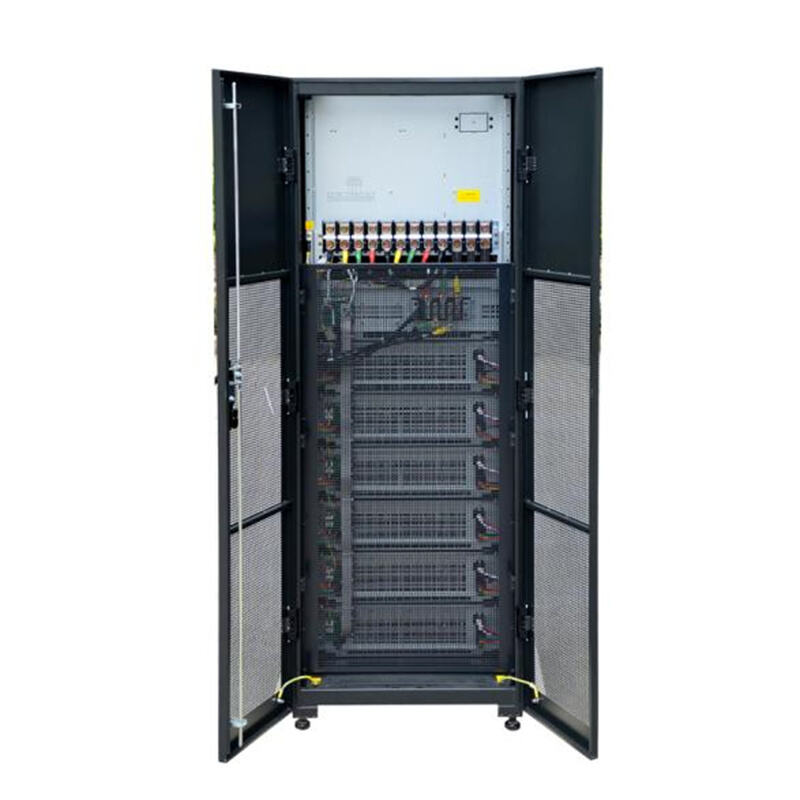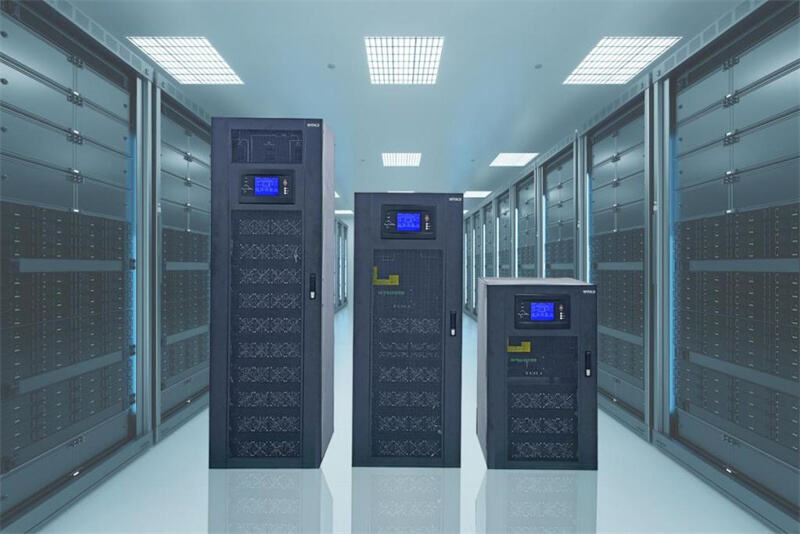በቀጣይ የሚያሳድግ የዳታ ማቆሚያዎች አስፈላጊነት በየጥዋቱ የሚጨምር የዲጂታል ዓለም ውስጥ ከፍተኛ ጥገና ያስፈልጋል፣ እና የዳታ ማቆሚያ ጥራት ከማንኛውም ጊዜ የበለጠ አስፈላጊ ነው። የፋይናንስ ልዩነቶችን ስናካሂድ ወይም የጤና ዳታ እንደምንከማች ወይም በአትላንቲክ የሚካሄደውን ግንኙነት ስንመለከት የአሁኑ መሰረተ ልማት የሆነው የዳታ ማቆሚያዎች ዋና የሆነ አካል ናቸው። የሚያከናውኑ የቀጣይ ክዋኔ ኃያል ነው፣ እና የኃይል ማንኛውም ችግር ከባድ ሊሆን ይችላል። የማይቆረጥ የኤሌክትሪክ ኃይል አቅርቦት (UPS) ለማንኛውም ውጤታማ የኃይል ጥበቃ ስትራቴጂ ማዕከላዊ ነው፡ አስፈላጊ የመረጃ ታማኝነት እና ቀጣይነት መድን ነው።
የዩፒኤስ ምንድነው እና ለዱата ሴንተሮች ምክንያት እንዴት አስፈላጊ ነው?
የአንስፓይንተበል ፓወር ሳፑላይ ወይም ዩፒኤስ የኤሌክትሪክ መሳሪያ ነው ዋናው የኤሌክትሪክ ምንባር የተጠፋበት ጊዜ የአደጋ ጊዜ የኃይል አቅርቦት የሚሰጥ። ዱታ ሴንተር ውስጥ ያሉ የመሳሪያ አካላት እና የኤሌክትሪክ አቅርቦት መካከል ያለውን ዋና ዋና መከላከያ ምልክት ያደርሳል።
የዩፒኤስ መሳሪያው የአደጋ ጊዜ ላይ ብቻ ሳይሆን የቮልቴጅ መቀነስ፣ የዝቅተኛ ጅረት እና የድግግሞሽ መቀየሪያ ችግሮችን የሚከላከል እና የሚገናኝ የኤሌክትሪክ ኃይል ጥንቃቄ ያለው ስርዓት ነው። ይህ ማለት የዳታ ማዕከሎች የሚገኙበት ጊዜ ራስሶቹ፣ የማከማቻ እና የራስገብ መሳሪያዎች በማንኛውም አይነት ጉዳት የማይገናኙ መሆናቸውን ያመለክታል። እንዲሁም ይህ ስርዓት በደህንነት ሊያቕርብ ወይም ወደ የአደጋ ጊዜ ጅረት መሳሪያዎች ሊተላለፍ ይችላል፣ ይህም የዳታ መጥፋት ወይም መጠፋትን ለማስወገድ ይረዳል።
እና የዩፒኤስ አራማ አጭር የኤሌክትሪክ መሙያ አቋርጠው የስርዓት መደበቅ፣ የመሳሪያ ቅርንጫፍ፣ ወይም የዱታ ጥራት ጉዳቶችን ሊያስከትል ይችላል፤ ይህንን የሚያደርጉት የአሁኑ የንግድ ኢኮኖሚ አንድም አይፈልግም።

የዩፒኤስ የመቆም ጊዜንና የውሂብ አጠፋን እንዴት ይከላከላል
የዳታ ማዕከል የማይገኝበት ጊዜ የሚያስከፍለው ድርብ ነው። የምንጭ ጥረት እንኳን የአንድ ደቂቃ የማይገኝበት ጊዜ ከወር በላይ የሚቆጥረውን የሺዎች ዶላር ወርዱን ለማጣራት ብቻ ሳይሆን ለረጅም ጊዜ የሆነ የጓደኛነት ጉዳትና የው recoveryል recovery ወጪዎችንም ያካትታል።
የዩፒኤስ ሲስተም እነዚህን አደጋዎች ለቀነስ ሰንጥቆ አስፈላጊ ሚና ይጫወታል። እንዲሁም የተረጋጋ ኃይል አቅርቦትን ያስተላልፋል እና ጥሩ ኃይል እንደሆነ ጊዜ ኃይል የማይገኝበት ጊዜ ኃይሉ በነፃነት አይቁርም፣ አገልግሎቶች አይቁረጡም፣ ዳታቤስ አይወድቅም ወይም ዋና ዋና መረጃዎች አይጠፉም። የገንዘብ ጉዳዮች፣ ጤና ጉዳዮች እና ተለኮሙኒኬሽኖች ውስጥ ይህ ችሎታ በቀላሉ ተገቢ መሆኑ ብቻ አይደለም እንዲሁም ለሕግ ጉዳዮች መሟሟር እና ለአገልግሎት ዝግጅት መቆም ይጠበቅባታል። የዩፒኤስ በደህንነቱ የሚያደርገው የጊዜ ልዩነት ወይም ኃይል መቆራረጥ እና የሁለተኛ ጄነሬተሮች መካከል ያለውን ክፍተት በማሞላ (የሚገኝበት ቦታ ላይ) የዲያው የአገልግሎት አቋርጦ ምንጭ ይሰርዛል። ይህ በቀጥታ የአገልግሎት አቋርጥ ምንጭ የሚያስወግደው ትልቅ የንግድ እሴት ይፈጥራል፣ የገንዘብ መድረሻውን ይ захабና የድርጅቱ የሥራ አፈፃፀም አምነት ይጠብቃል። ይህ የግብርና እድገት የሚያስችል የኢንቨስትመንት አይነት ሲሆን በአደጋ ምንጭ የሚከበተውን አንድ ብቻ አደጋ ለማስወገድ ተጠቅሞ ይመርጣል።
በተጠቃሚ የሚሰራ የዩፒኤስ መሬት ላይ ማስተዋወቅ ሲታወቅ ብዙ የማይገኝበት ጥያቄ ብቻ አይደለም። እዚህ ላይ ዋናው ነገር ለመተማመን እንዲችል እና አገልግሎቶቹን ለማቅረብ እና የገቢዎቹን ማስቀመጥ ነው። በመሠረቱ፣ የዩፒኤስ የንግድ ተቋሚነት ዋና አ pillar ነው።

በጓዳ ማስሊት እና በሚክሮ ዳታ ማዕከሎች ውስጥ የዩፒኤስ
በቴክኖሎጂው ፈጠራ ምክንያት ዳታ ምርProcessingግ መዋቅሩም ይቀየራል። የጓዳ ማስሊት እና የሚክሮ ዳታ ማዕከሎች መውለድ የማስሊት ኃይልን የበለጠ ወደ ዳታ ምንጭ ነጥብ አጠራሩ። ይህ የማይነሱ መስተጋብር የመዘግየትን ጊዜ ያነሰና የአፕሊኬሽኖችን ችሎታ ይሻሻላል ለምሳሌ እ thing ነገሮች ኢንተርኔት፣ አውቶማቲክ መኪናዎች እና የባህር ከተሞች።
እነዚህ አነስተኛ እና አحي sometimes የቀርበው ማዕከላት የወቅቱ የበዕታዊ መደገፍ የሌላቸው እጅግ በጣም ትልቅ የነበሩ የውሂብ ማዕከላት ጥንካሬ አይኖራቸውም፡፡ ይህ ለማዕከላቱ የበዕታዊ አይነት የማይቆም ሁኔታ ይፈጥራል፡፡ በዚህ ሁኔታ የአኬባቢ የኤሌክትሪክ መቆሚያ (UPS) ጥቅም እጅግ በጣም አስፈላጊ ነው፡፡ አነስተኛ፣ ቀላል እና እጅግ በጣም ጥሩ የኤሌክትሪክ መቆሚያ ስርዓቶች የጓዳ መስኮችን በተደጋጋሚ የሰው ግብዓት የሚጎትት ነገር አይደሉም፡፡ የኤሌክትሪክ መቆሚያ ክፍሎችን በጓዳ የኮምፒውተር መተግበሪያዎች ውስጥ በመቀመጥ እነዚህ የተቀመጡ መስኮች ሁልጊዜ የሚሰራዉ እንዲሆኑ እና ኤሌክትሪክ ኃይል በአጭር ጊዜ ወይም በተዘዋወረ ጊዜ እንዲቆሙ ያደርጋል፡፡
የኤሌክትሪክ መቆሚያ (UPS) መፍትሄዎች በሚክሮ የውሂብ ማዕከላት ውስጥ በተከፋፈለ የኩሎች ውስጥ በማያቋርጥ አሂድ እና በውሂብ ቅድሚያ ላይ ብቻ ሳይሆን ተጽዕኖ ያሳወቃል፡፡ ይህ በተለይ ከፍተኛ ጠቃሚነት ያለው ነው የጊዜ መለኪያ ሂደት ውስጥ የጊዜ ማቆሚያ ወይም የማይቋቋም ሁሉንም ስርዓት ሊጎድለው ይችላል፡፡


